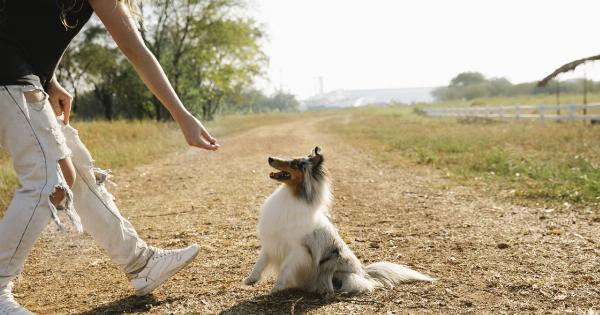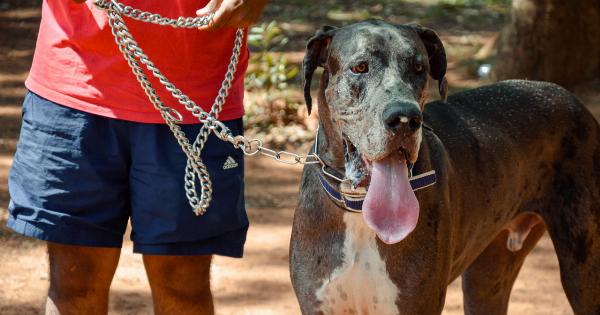Dogs are beloved pets that many people keep in their homes. They are loyal, affectionate, and great companions. However, sometimes they exhibit behaviors that we just don’t understand.
Understanding these strange dog behaviors can help keep your furry friend happy, healthy, and safe. In this article, we will explore some of the most common unusual behaviors of dogs, and what they mean.
Barking
Barking is a natural behavior in dogs. They use it to communicate with other dogs and their owners. However, excessive barking can be a sign of fear, anxiety, or territorial behavior. If your dog is barking excessively, it is important to understand why.
Some dogs bark to get attention, while others may be trying to protect their territory. If your dog is barking excessively, it is a good idea to consult with a veterinarian or a dog behaviorist.
Chewing
Dogs love to chew on things. It’s a natural behavior that helps to keep their teeth clean and healthy. However, if your dog is chewing on inappropriate objects, such as shoes, furniture, or clothes, it could be a sign of anxiety or boredom.
Provide your dog with plenty of chew toys and keep them entertained with games and regular exercise.
Digging
Many dogs love to dig, and it’s a natural instinct that can be traced back to their wild ancestors. Dogs are known to dig for a variety of reasons, such as to find cool spots in the summer, to escape from confinement, or to bury things.
If your dog is digging excessively and destructively, it may be because they are bored or anxious. Provide them with plenty of exercise and mental stimulation, and consider providing a digging area just for them.
Biting
Biting is a serious behavior problem in dogs. In some cases, it can be a sign of aggression or fear. It’s important to understand the cause of your dog’s biting behavior and address it accordingly.
Dogs that are poorly socialized or not properly trained are more likely to bite. In some cases, biting can be a sign of a medical condition, such as pain or discomfort. If your dog is biting, seek help from a veterinarian or dog behaviorist immediately.
Jumping
Jumping is a common behavior problem in dogs, especially puppies. Dogs jump for a variety of reasons, such as to greet people, to express excitement, or to seek attention.
However, jumping can be a nuisance, especially if your dog is large or jumps on children or elderly individuals. Training your dog to keep all four paws on the ground is important. Provide your dog with enough exercise and mental stimulation to keep their energy levels under control.
Crying or Whining
If your dog is crying or whining persistently, it could be a sign of pain, anxiety, or stress. In some cases, dogs cry or whine to get attention or to signal a need, such as the need to go outside.
It’s important to rule out any medical causes and treat any underlying medical condition. Additionally, you can provide your dog with plenty of mental stimulation and exercise to reduce anxiety and stress.
Chasing
Chasing is a common behavior in dogs, and it can be a lot of fun for both dogs and their owners. However, chasing can become a problem if your dog is chasing cars, bikes, or other animals. This behavior can be dangerous and even deadly.
Providing your dog with enough exercise and mental stimulation can help reduce their desire to chase. Additionally, providing plenty of positive reinforcement and training can help control their behavior.
Licking
Dogs lick for a variety of reasons, such as to clean themselves or to show affection. However, excessive licking can be a sign of anxiety, boredom, or a medical condition.
If your dog is licking excessively, it’s important to address the underlying cause. Provide plenty of mental stimulation and exercise to keep your dog busy and happy. Additionally, you can provide them with chew toys or puzzle toys to keep them occupied.
Crouching
Crouching is a submissive behavior in dogs, and they will do it in the presence of more dominant dogs or people. If your dog is crouching, it’s important to assess the situation.
Are they crouching because they are nervous or fearful? In some cases, crouching can be a sign of aggression, so it’s important to address the underlying cause and work with a professional dog trainer or behaviorist.
Circling
Circling is a common behavior in dogs, and it’s usually a sign that they are trying to find a comfortable spot to lay down. However, excessive circling can be a sign of anxiety, boredom, or a medical condition.
Provide your dog with a comfortable spot to lie down, and provide plenty of mental stimulation and exercise to keep them happy and occupied.


























